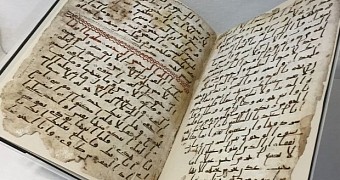Having subjected it to a series of radiocarbon analysis tests, researchers found that a Quran parchment kept in storage at the University of Birmingham in the UK dates back to about 1,500 years ago. More precisely, the manuscript appears to have been written between AD 568 and 645.
Hence, it is now hailed as one of the oldest surviving copies of the religious text. Mind you, there are even rumors that it could be the absolute oldest copy of the Quran thus far discovered.
“Researchers conclude that the Quran manuscript is among the earliest written textual evidence of the Islamic holy book known to survive.”
“This gives the Quran manuscript in Birmingham global significance to Muslim heritage and the study of Islam,” University of Birmingham historians write in a statement.
The copy dates back to the days of the Prophet Muhammad
What's interesting about this centuries-old copy of the Quran is that, as it turns out, it dates back to the days of the Prophet Muhammad, said to have lived between the years AD 570 and 632.
The reason this discovery left researchers just a wee puzzled is because, according to Muslim tradition, it was the Prophet Muhammad who, between the years AD 609 and 632, received the revelations included in the Quran from God.
Even so, this does not mean he had anything to do with the manuscript now in storage at the University of Birmingham's Cadbury Research Library. Instead, the revelations first spread by word of mouth and were only later put down in writing.
The parchment only includes a few fragments of the Quran
Specialists who have had the chance to examine the manuscript say that, rather than being a complete work, it only includes fragments of the Quran's chapters 18 to 20.
This is perfectly understandable seeing how, before being bound together in book form, the revelations of the Prophet Muhammad were first written down on individual manuscripts and spread as such.
“The final, authoritative written form was completed and fixed under the direction of the third leader, Caliph Uthman, in about AD 650,” explains researcher David Thomas.
The Quran fragments were written in ink on animal skin taken from a calf, a goat or maybe a sheep. Before being turned into a manuscript, the skin was cleaned of hair and flesh, dried and stretched.

 14 DAY TRIAL //
14 DAY TRIAL // 